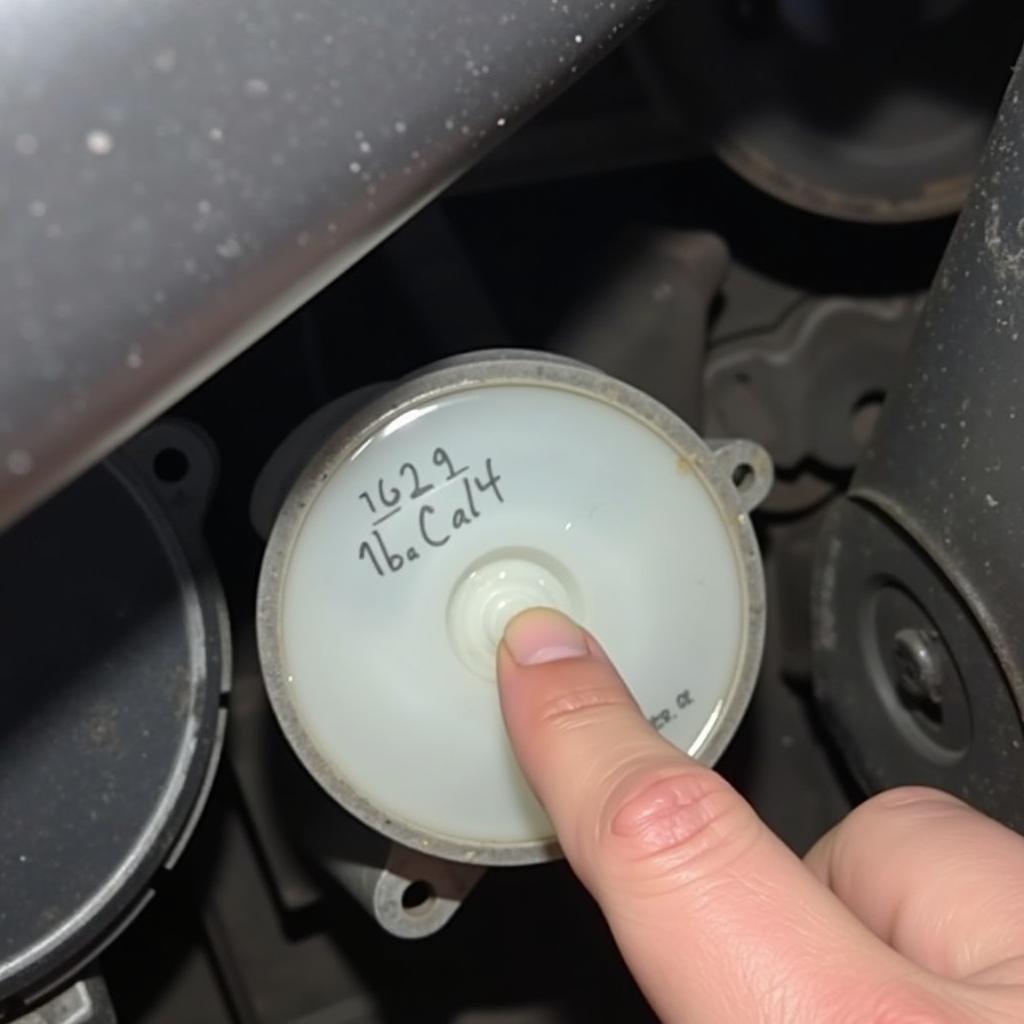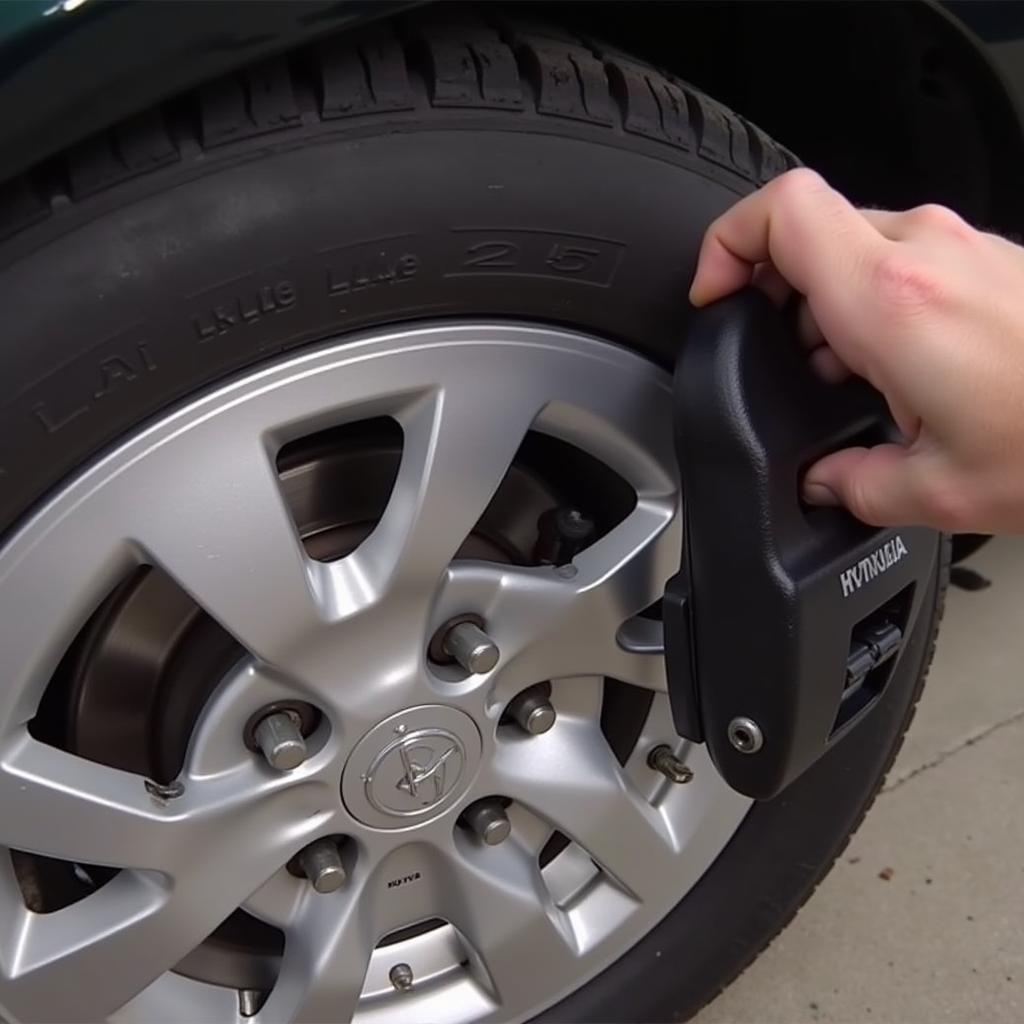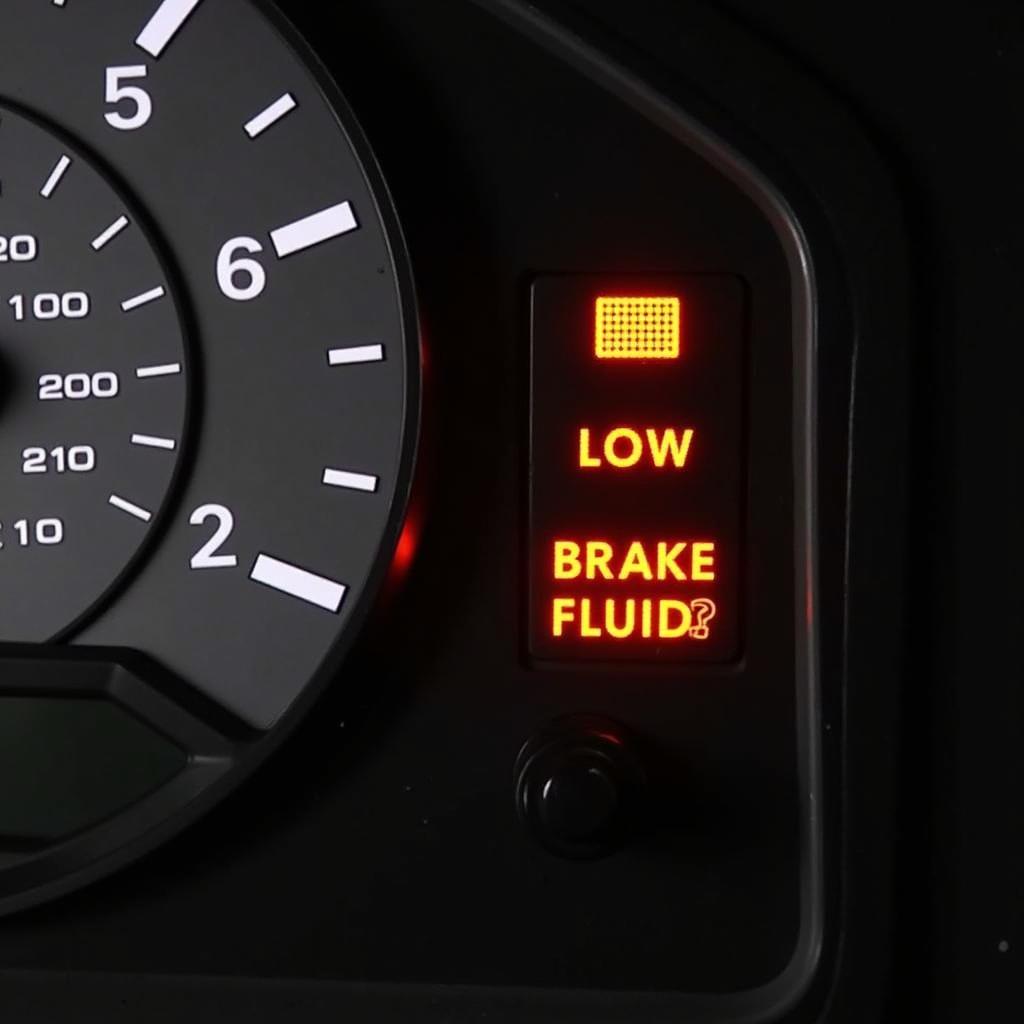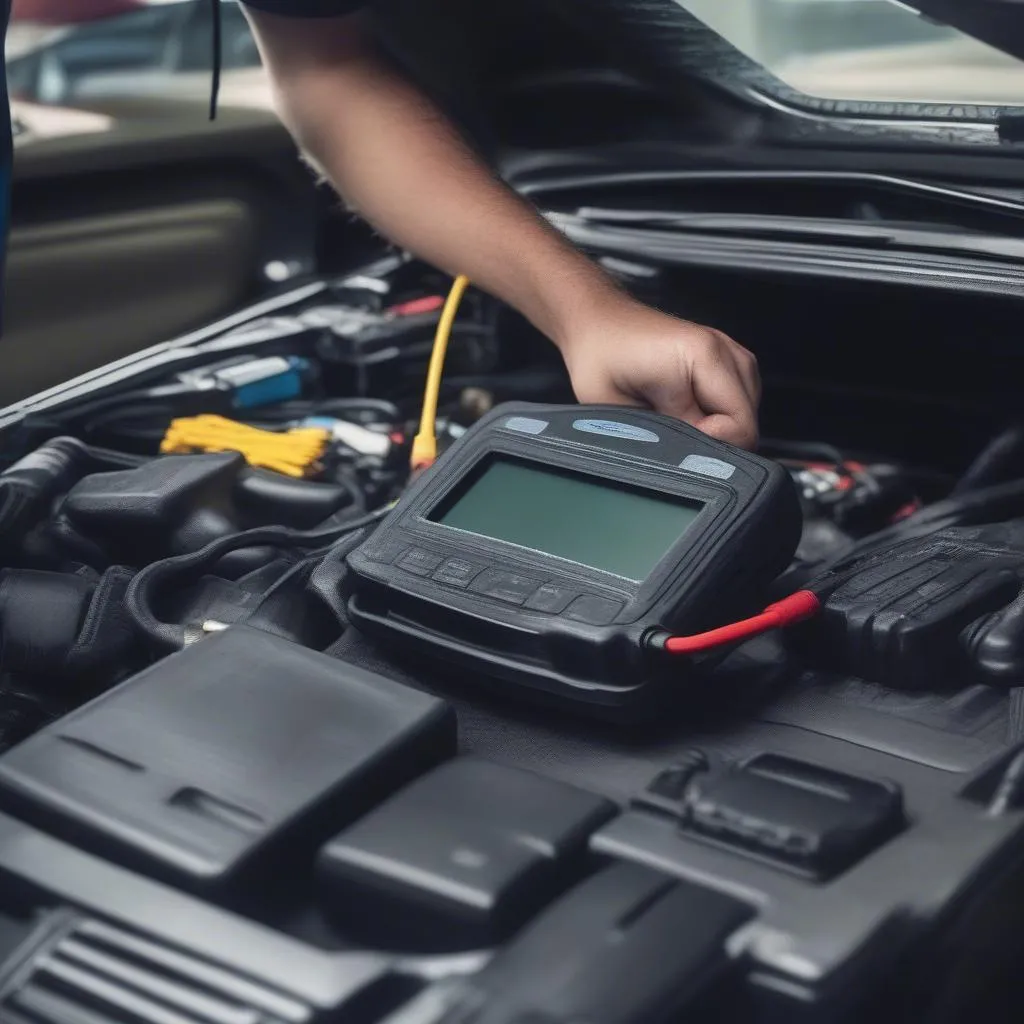If you’ve replaced a caliper on your 2005 Hyundai Elantra and the brake warning light stubbornly remains on, you’re not alone. This is a common issue, and thankfully, usually a straightforward fix. This article will guide you through the potential causes and solutions, offering expert advice on diagnosing and resolving this frustrating problem. We’ll cover everything from simple checks to more advanced diagnostic techniques, ensuring you can get back on the road safely and confidently.
Understanding the Brake Warning Light
The brake warning light is your car’s way of saying something isn’t right with the braking system. It can be triggered by a variety of issues, from low brake fluid to more serious problems like a malfunctioning ABS system. In the case of a recent caliper replacement, the light might be on due to a few key reasons we’ll explore.
Common Causes of a Persistent Brake Light After Caliper Replacement
Low Brake Fluid
The most common culprit after a caliper replacement is low brake fluid. When you replace a caliper, some fluid is lost during the process. Make sure to check your brake fluid reservoir and top it off if needed. Use the correct brake fluid specified in your owner’s manual.
Air in the Brake Lines
Another frequent issue is air trapped in the brake lines. This can happen when the system is opened during the caliper replacement. Bleeding the brakes is the solution here, which involves removing the air bubbles from the lines.
Faulty Brake Sensor
Sometimes, the brake pad wear sensor can be damaged or improperly installed during a caliper replacement. This sensor triggers the warning light when the brake pads are worn. Check the sensor’s connection and ensure it’s properly positioned.
 Checking the brake fluid reservoir in a 2005 Hyundai Elantra
Checking the brake fluid reservoir in a 2005 Hyundai Elantra
ABS Issues
While less common after a caliper replacement, a problem with the Anti-lock Braking System (ABS) can also illuminate the brake warning light. This requires more advanced diagnostics, often needing a scan tool to read the ABS codes.
Troubleshooting the Brake Warning Light
-
Check the Brake Fluid Level: This is the first and easiest step. Open the hood and locate the brake fluid reservoir. If the fluid is low, top it off with the correct type.
-
Bleed the Brakes: If the fluid level is okay, the next step is to bleed the brakes. This requires some mechanical knowledge, but there are plenty of online tutorials available. You’ll need a friend to help with this process.
-
Inspect the Brake Pad Wear Sensor: Ensure the sensor is properly connected and not damaged. If it is damaged, it will need to be replaced.
-
Scan for ABS Codes: If the above steps don’t resolve the issue, it’s time to use a scan tool to check for ABS codes. This will pinpoint the exact problem within the ABS system.
 Bleeding the brakes on a 2005 Hyundai Elantra
Bleeding the brakes on a 2005 Hyundai Elantra
Remote Diagnostics and Programming
In some cases, remote diagnostics and programming can be helpful. This involves connecting your vehicle to a specialized computer that can read and interpret data from the car’s systems, potentially identifying the root cause of the persistent brake light.
“Remote diagnostics can be a game-changer,” says John Smith, Senior Automotive Diagnostic Technician at Advanced Auto Solutions. “It allows us to pinpoint issues quickly and efficiently, saving time and money for the customer.”
Preventing Future Issues
Regular maintenance is key to preventing future brake problems. This includes routine brake inspections, fluid flushes, and timely replacement of worn components.
“Preventative maintenance is the best way to avoid unexpected brake issues,” advises Sarah Jones, Lead Mechanic at Reliable Auto Repairs. “Regular checks can save you from costly repairs down the road.”
 Inspecting the brake pad wear sensor on a 2005 Hyundai Elantra
Inspecting the brake pad wear sensor on a 2005 Hyundai Elantra
Conclusion
Replacing a caliper on a 2005 Hyundai Elantra and still having the brake warning light on can be frustrating, but with a systematic approach, you can usually pinpoint the cause and fix it. Remember to check the brake fluid, bleed the brakes, inspect the sensor, and consider using a scan tool or remote diagnostics for more complex issues. Regular maintenance is the best way to prevent future problems with your 2005 Hyundai Elantra and replaced caliper and brake warning light issues.
FAQ
-
What type of brake fluid should I use in my 2005 Hyundai Elantra? Consult your owner’s manual for the specific type of brake fluid recommended for your vehicle.
-
How often should I bleed my brakes? It’s generally recommended to bleed your brakes every two years or as needed.
-
Can I drive my car with the brake warning light on? While you might be able to drive, it’s highly discouraged as it indicates a potential safety issue with your brakes.
-
How much does it cost to replace a brake pad wear sensor? The cost varies depending on the make and model of your vehicle, but it’s typically a relatively inexpensive part.
-
What are the symptoms of a faulty ABS system? Common symptoms include a pulsating brake pedal, unusual noises during braking, and a longer stopping distance.
-
How can I find a qualified mechanic to diagnose my brake light issue? Ask for recommendations from friends or family, or search online for reputable auto repair shops in your area.
-
Is it difficult to bleed brakes myself? While it requires some mechanical aptitude, it’s a task many car owners can perform with the help of online tutorials and a friend.


